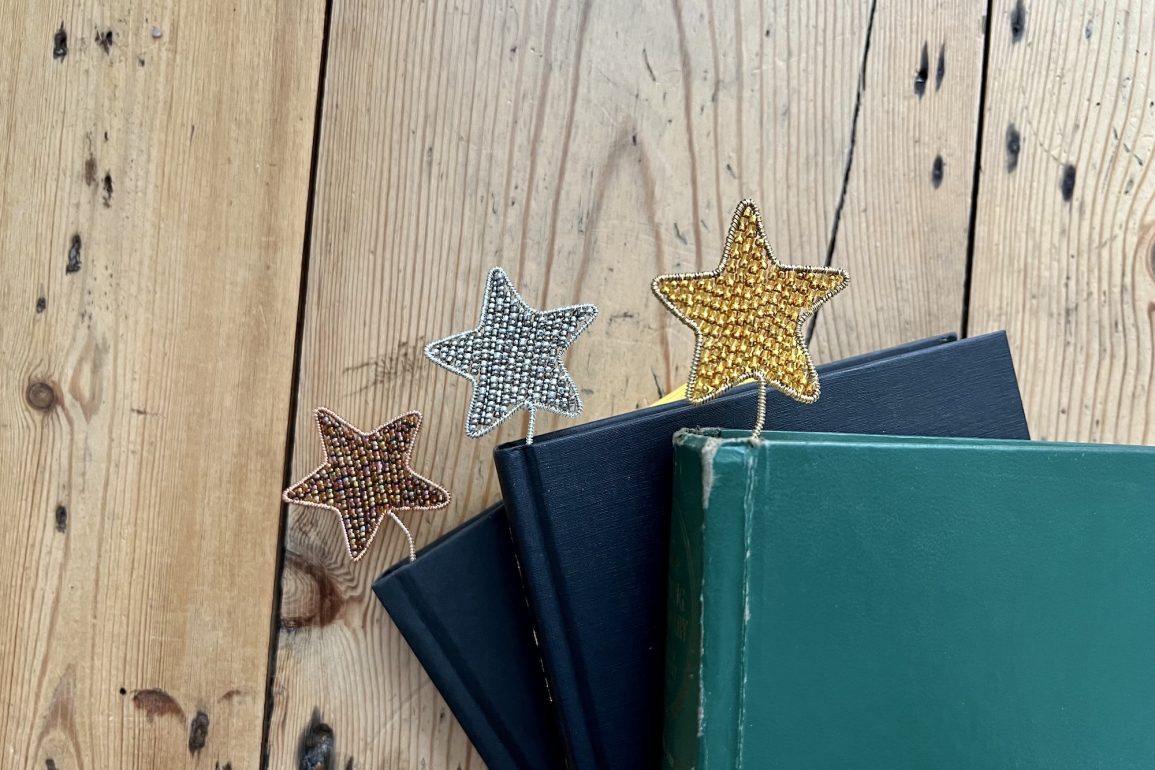The History of Bookmarks – The need for a handy marker to place in a book was recognised at an early date. Injury to the spine of a book from laying it face down as well as creasing the pages by turning the corner were all ways of risking these finely bound volumes. With the rise of printing in the 15th century, books were published in limited numbers and were very valuable, making the need to protect these precious commodities a high priority.
The oldest existing bookmark dates from the 6th century AD and was crafted from ornamented leather lined with vellum on the back, attached with a leather strap to the cover. The earliest books published were delicate as well as precious and something was needed to mark pages in them without causing them any harm.
Some of the oldest bookmarks were found in the late medieval ages. Between the 13th and the 15th centuries, European monasteries used clip-on type bookmarks made of vellum or leather using the rest of the material to cover the book for manuscripts and incunabula (an early printed book). These early bookmarks came in a variety of shapes like a plain strand or a clip-on triangle. However, there were some impressive examples of more sophisticated designs such as a rotating disc that could indicate the column of the page.
One of the earliest references to the use of bookmarks was in 1584 when the Queen’s Printer, Christopher Barker, presented Queen Elizabeth I with a fringed silk bookmark. Christopher Barker acquired a patent as Queen’s Printer in 1577 which gave him the sole right to print the Bible. He was also a draper: hence the silk for the bookmarker with plaited silk cords, silver knots and silk tassels which appeared to have been made for use in a bible of 1632.
A common type of bookmark in the 18th and 19th centuries were narrow silk ribbons bound into the book at the top of the spine and extended below the lower edge of the page. The first detachable bookmarks began appearing in the 1850s. Most bookmarks in the 19th century, made from silk or embroidered fabric, were intended for use in Bibles and prayer books. It wasn’t until the 1880s that paper and other materials became more common.
During the Victorian and Edwardian eras, the use of luxuriant materials was more prominent. Victorian ladies taught their daughters embroidery, this meant many bookmarks were produced which were used in bibles and prayer books and became a favoured gift for friends and family members. These homemade bookmarks were often produced from pieces of ribbon embroidered by hand as well as an embroidered perforated card or small water colour drawing with stitching.
By the 1860s, machine-woven bookmarkers were being manufactured, mainly in Coventry which was the centre of the silk-ribbon industry in the UK.
The production of woven silk bookmarks started to decline in the 1880s and printed markers made of stiff paper or card began to appear in significant numbers. Bookmarks became a really popular way for companies and businesses to publicise their goods and services.
Highly colourful and decorative bookmarks which were often given away for free were distributed by the thousands showcasing products such as soap, pianos, stoves, furniture, perfumes, patent medicines, shoes, clothes, tobacco, food, and even travel and entertainment industries took advantage of this opportunity too.
Page markers (another name for bookmarks) typically referred to those made of metal with pierced blades and manufactured in England. These markers were crafted in novel shapes and often ornate handles with the monograms of their owners.
As we move into the age of digitization, where paperback is transforming into e-books the idea of a bookmark is still being used to favourite a web page or pause on a podcast. Nevertheless, for the avid physical book reader, whether you use a bit of old scrap paper or have a set of beautifully crafted bookmarks to mark your page it’s no wonder bookmarks have withstood the test of time.
Millennium Milli


